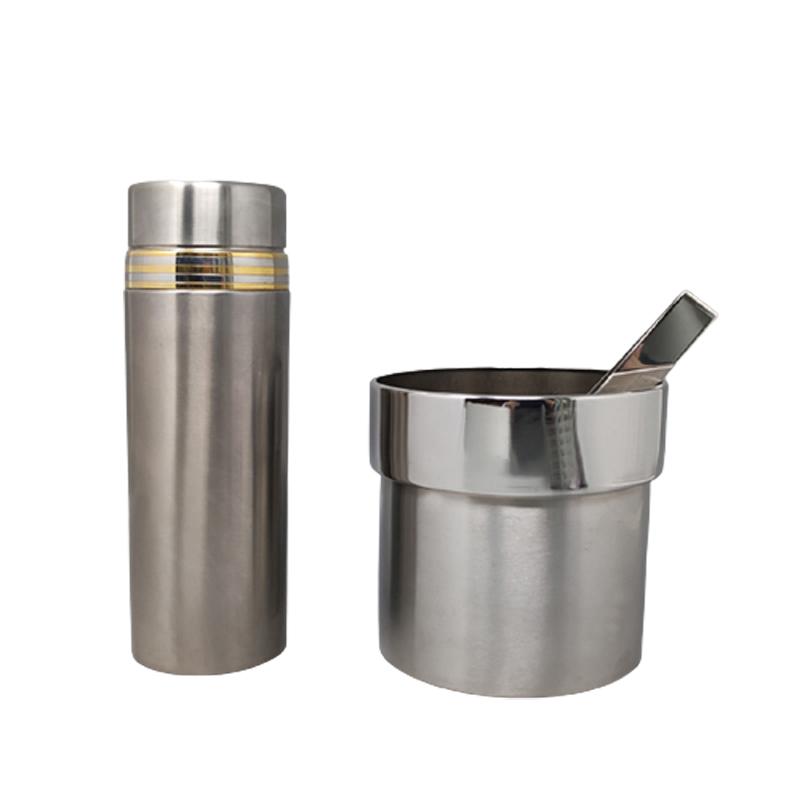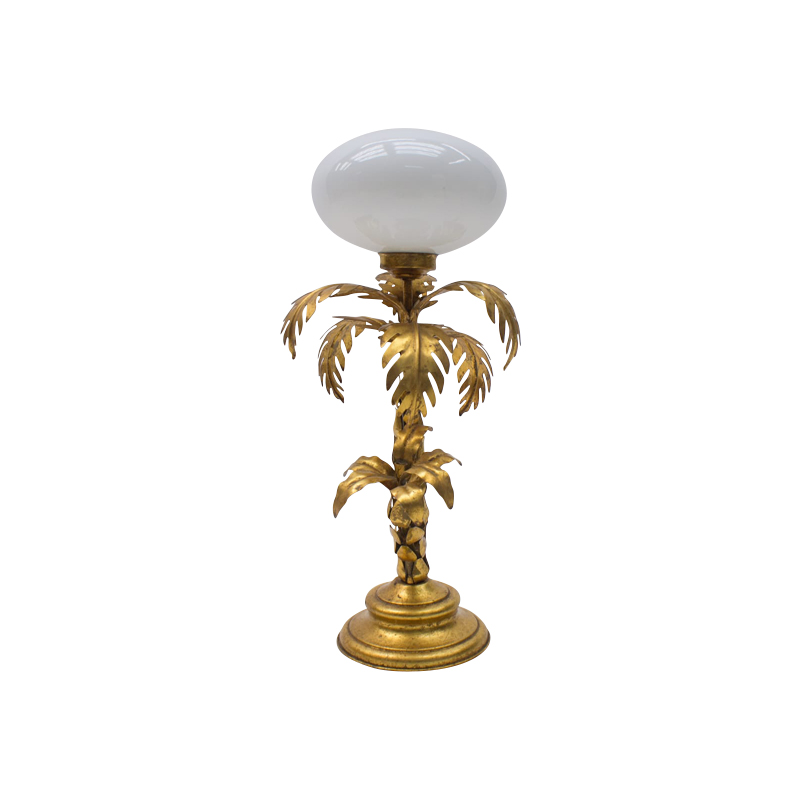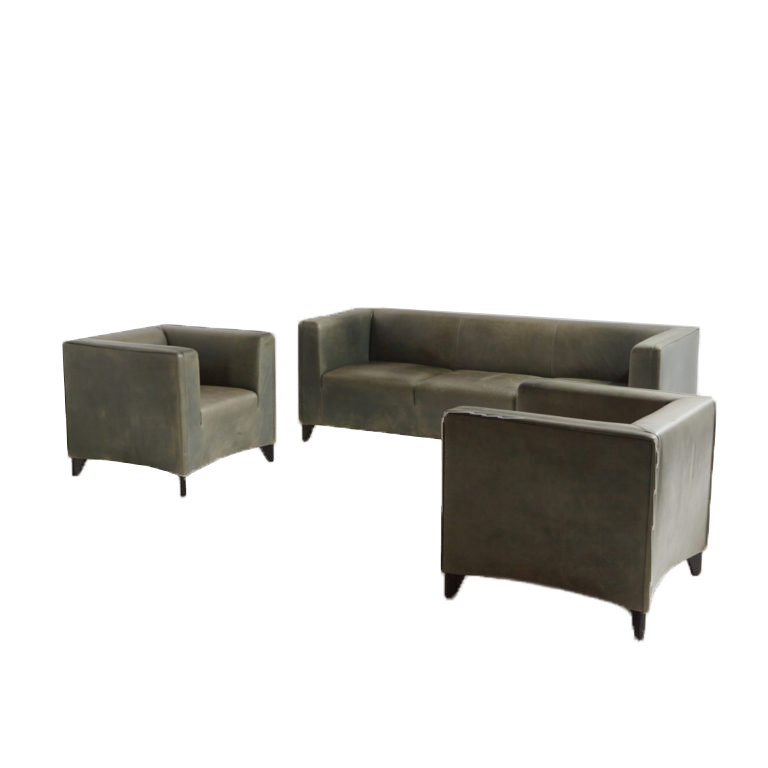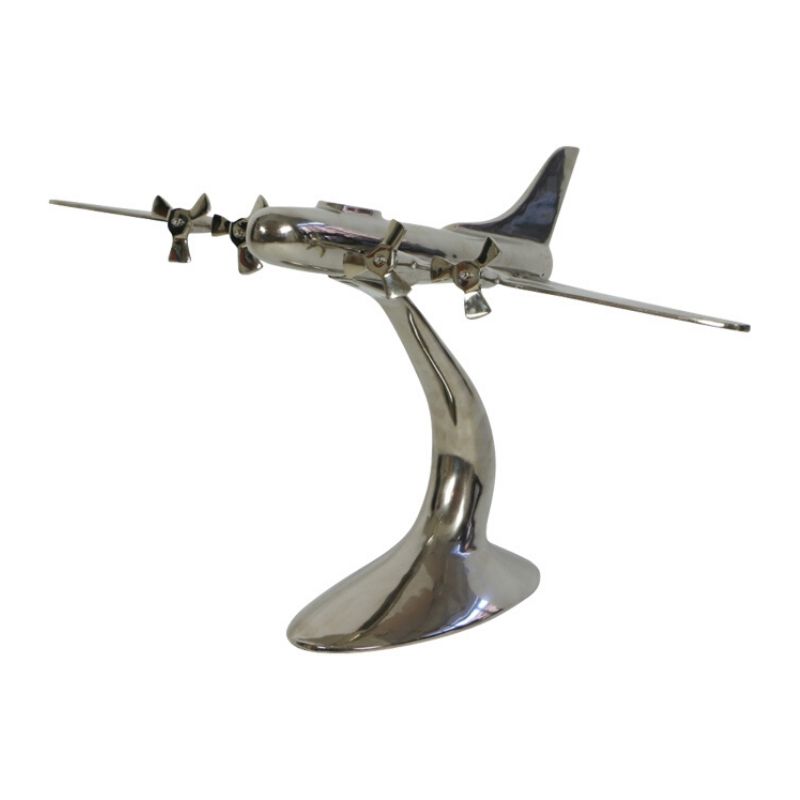Ash is as good a guess as any.
Sprayed nitrocellulose-based lacquer was the common production finish on US-made wood furniture in the '50's-'60's. Often over a sprayed pigment stain, but, sometimes, with colorants and/or other modifiers added.
Applying a pigment stain to ring-porous woods like ash tends to accentuate the grain. Dyes, less so. Under a transparent finish, ash will, over time and exposure to UV, eventually darken to a mellow orange-brown.
That said, I think any film-forming finish is entirely appropriate in this case with the possible exception of polyurethane. Lacquers are best applied with spraying equipment that most of us don't have available. A traditional amber-toned, oil-based varnish is probably what I would use. Staining or dyeing prior is your choice.
Either way, sand the arms up to at least P320 if not higher. You'll be glad you did!
Edited to change "methylene cellulose" to "nitrocellulose-based". I have no idea what "methylene cellulose" is or even if it exists.
Thank you so much for your answers!
tktoo,
Yes i am now convinced that a film-forming finish is the right choice, and i am going to act in that direction. I am dying to practice more of those beautiful scandinavian finishes, but i was quite certain this was not appropriate for this piece.
Behind that awful recent varnish, that i assume it was applied as a last minute attempt to sell it better, and that peeled out easily like a thick rubbery skin, I could notice a thin older layer. And now that you mention it i am sure it was stained, with a more brownish color.
I am keeping the original upholstery if i can, or replace it with the most similar one that i could find. I want to preserve the "idea" of it all. Color, finish, wood-upholstery relation, etc. So I have to think a little more about this staining choice, as you put it. I am a little torn between conservation and personal preferences.
I would investigate some more on those finishes that you mention in the first place. And see what is at my reach here.
Thank you so much.
Oh, and the arms are as smooth as suede now!
OK, you guys have me sold on elm. A species I haven't worked with much at all.
FWIW, one doesn't see much of it here in New England lately, either standing or at hardwood dealers, though it was an important commercial timber widely used for construction and cabinetry for centuries before being decimated by disease. There are a few stately old elms left here on my town's common that are slowly losing the battle.
All that I mentioned above applies to elm or ash, though elm that I have seen has exhibited wider variation of color and grain pattern than is typical for ash. I can tell you that old-growth elm holds cut nails like they've been welded in place.
Sebastian, wet the bare wood with naphtha or white spirits for an idea of what it might look like under a finish. Also, some dyes are more prone to fading from harsh UV exposure than pigment stains. Something to consider as you do your research.
I have seen a simple oil finish on walnut. It was probably a walnut tinted oil finish to even out the color variations in walnut, which has very blended together sapwood and heartwood.
I suspect that the elm chair were stained to darken the wood, and were probably a bit cheaper. I would not be surprised if they had a lacquer finish that you can not duplicate. I would put on a oil based varnish finish.
My chair was stained and lacquered so all of that had to be stripped and sanded. I used a raw linseed oil finish as it is my personal preference. The Elm wood really lit up from the oil and has a great feel to the hand. It's funny this thread came up when it did, I am currently trying to locate some Elmwood to cut plugs and finalize this project.
Sebastian, I'm not one to discourage collecting tools and developing new skills, but it would be far more economical (time and expense) to have a pro spray the frame than to assemble all the necessary equipment, prepare appropriate space, and acquire the not insignificant experience involved in making a proper job of it.
There are various lacquers available in aerosol spray cans if you do a little goggling. That's the way I would go if I were determined to stick to lacquer.
Edit: One advantage of using lacquer rather than a traditional brush-on varnish is that it is much easier to remove if you need a do-over. Dries to the touch almost instantly, too. Which can be either a good or bad thing!
oh thanks tktoo.
I know you mean well. And i realise i may have given a false impression. I happen to make my living nowadays designing and making furniture. My doubts were not so much about the technics involved, though i am always trying to learn more and acquire new skills, but about the, lets say, historical issues, common uses, woods, etc. From that era which fascinates me, and in this case from that part of the world.
I must say i was more into the scandinavian side of this matter, but lately i have been discovering and learning a lot about the american design, designers and brands. And found some interesting pieces. In fact it was this chair that opened this new "american wing" I did buy it just because l found it beautiful, and had no idea, neither the seller! what kind of piece it really was. I knew i had something special though, and decided to leave it untouched for a while. And it all started with the patent number engraved in the locking system.
All that said, your is a very good advice, i am not planning on complicate myself too much. I might get my hands on the equipment necessary, and the space, and all. But might as well do the oil-based varnish finish that you so well recommended. And mine i must say, is as fine as a french polish! jaja ;.)
See you around. Thank you.
Where I live Siberian Elm is considered a trash tree and it is everywhere. Rarely you can find it cut into firewood. If you can find a piece of it, even if it is green, you could probably cut it down to size and dry it in your oven.
Or you could find some other old American piece that is trashed and use it for lumber. Lane Acclaim uses Elm for edge banding and legs.
If you need any help, please contact us at – info@designaddict.com









